This article outlines the top 10 UI automation testing tools expected to dominate the market in 2023, providing valuable insights for manual testers, automation engineers, developers, and other stakeholders.
From discussing the challenges of UI testing to providing a detailed overview of each tool, this article is your ultimate guide to selecting the best-fit UI automation testing tool.
UI automation testing is a critical aspect of software development. This is carried out by developers or quality assurance engineers. The goal of UI automation testing is to automate the manually performed UI testing tasks. This involves the creation of automated test scripts that can simulate user interactions with an application's user interface. It encompasses clicking buttons, entering text, navigating menus, and verifying the application's responses.
UI automation testing can reduce the time and effort required for repetitive and time-consuming manual UI tests. It also helps ensure that the UI functions correctly, is user-friendly, and meets the desired specifications.
By providing an efficient and effective way to test the application's UI, automation testing ultimately helps deliver high-quality software products that meet user expectations.
This can be challenging due to several factors, including
Modern applications have complex user interfaces with many interactive elements, making the testing process more difficult. The complexity of the UI design can make it challenging to test all the features and functionality effectively.
Applications must support multiple devices and platforms, requiring UI compatibility testing across environments. Such testing can demand considerable time and resources. Automation UI Testing tools can help test cross-platform UI compatibility efficiently.
As applications evolve, the UI may change, requiring updates to the testing scripts. Test scripts need to be updated and modified according to the changes made to the UI design.
UI testing can be slow and resource-intensive, particularly when testing complex applications. Testing can take longer, leading to software development and release delays.
Integrating UI testing tools with other tools and frameworks can be challenging, particularly for teams with limited resources. Integrating UI testing tools with different tools and frameworks can be complex and time-consuming.
Automated UI testing tools have become essential for ensuring the quality and reliability of user interfaces. Some of the top tools for UI testing include Testsigma, Selenium, ACCELQ, and Cypress which are all great examples of tools for UI testing. Here are the top 10 UI automation testing tools for 2023.
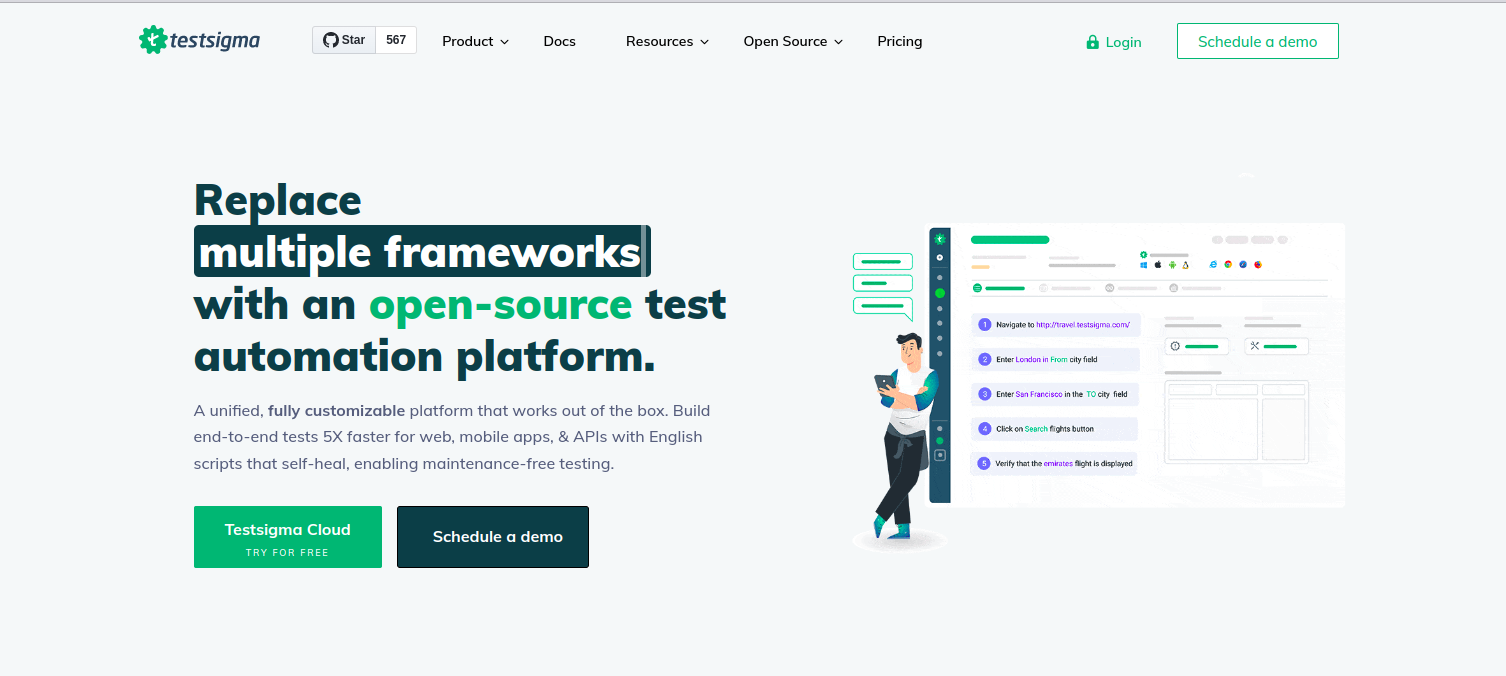
Testsigma is a cloud-based test automation tool for web, mobile and desktop applications. Its easy-to-use drag-and-drop interface simplifies test creation and execution. Notably, Testsigma offers advanced AI and machine learning capabilities that assist testers in developing more reliable and efficient automated tests throughout.
AI-driven automated testing tool to create stable and reliable tests, helping teams to achieve continuous testing and speed up the maintenance of their automated test suite.
Testsigma's cloud platform delivers instant test automation, 5x faster development, 70% less maintenance time, and 8x faster builds, enabling teams to easily collaborate and scale their testing efforts.
Testsigma also has an open source and free forever version.
Easy Test Case Creation: Testsigma's no-code platform allows you to create test cases in simple English, making it easy for non-technical team members to participate in the testing process.
Unified Platform Automation: With Testsigma, you can automate tests for a variety of platforms, including web, mobile, APIs, and desktop applications, all from the same place.
Testsigma offers dynamic and context-driven reports with powerful filtering options and drill-down features, allowing users at different levels to gain insights and create custom reports tailored to their interests.
Supports automatic bug reporting integration, helping you to quickly report bugs from the test case result page without missing any critical issues, even when you have limited time.
Supports debugging using screenshots, videos, and text logs.
Continuous integration and delivery support
Selenium is a popular open-source UI automation testing tool. It boasts powerful features like recording and playback and has an extensive community of developers and users.
Selenium supports several platforms for test automation, including web applications running on browsers such as Chrome, Firefox, and Safari, as well as mobile web applications running on platforms like iOS and Android. It also supports automating web applications on different operating systems like Windows, macOS, and Linux. Selenium's approach to test automation is more code-centric, which can be challenging for teams without strong programming skills.
Cross-browser and language compatibility
Open-source and extensive community support
Powerful recording and playback features
Grid feature for parallel test execution
Wide range of available plugins and integrations
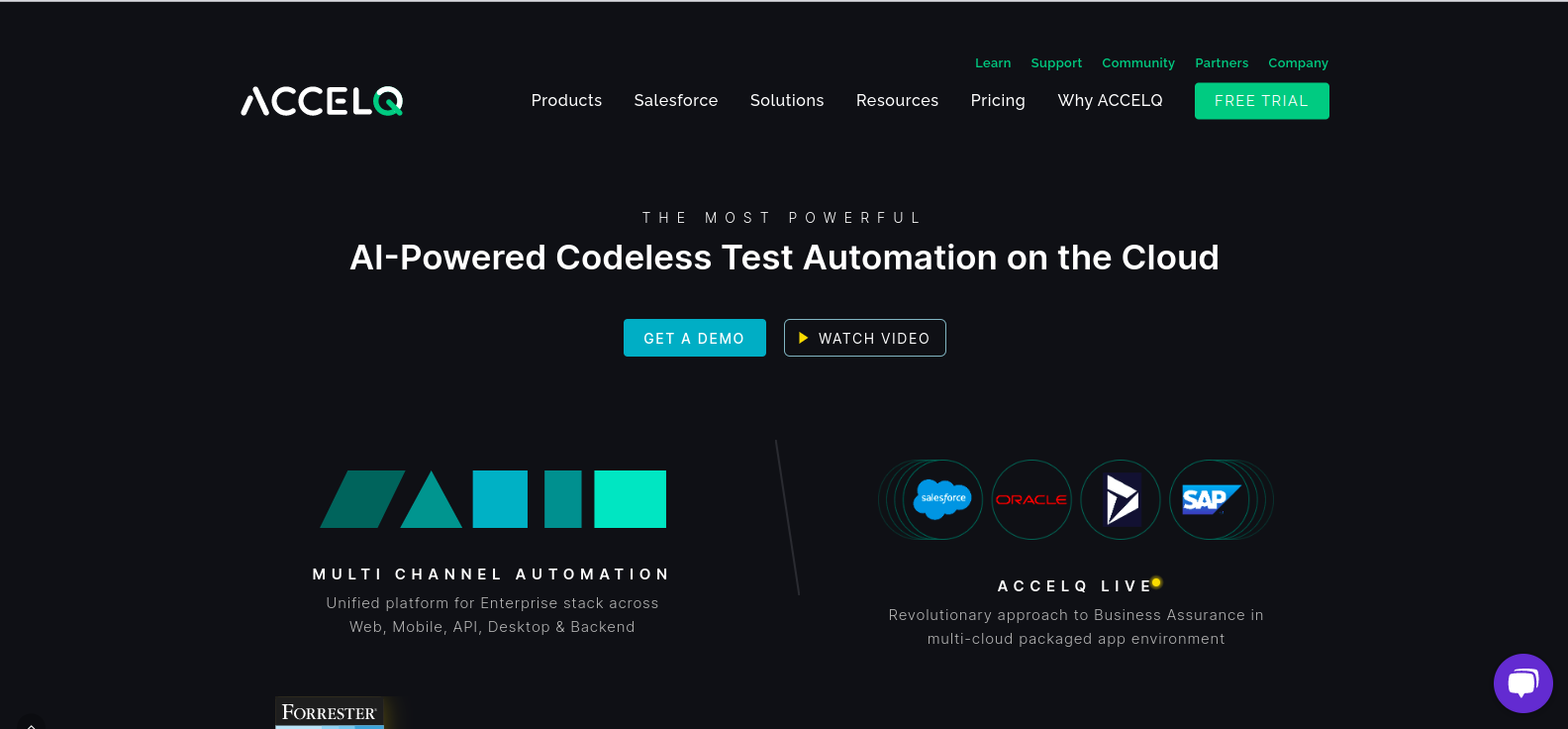
ACCELQ is a codeless test automation platform. It integrates advanced AI and machine learning capabilities for simplified test creation and maintenance. Additionally, ACCELQ provides built-in analytics and reporting.
ACCELQ focus on end-to-end testing and business process automation. It is known for its intuitive user interface. It requires more technical expertise to set up and maintain tests.
This supports multiple platforms, including web, mobile, and API testing. It can be used for testing on a variety of web browsers, including Google Chrome, Firefox, and Safari. It also supports mobile testing on both Android and iOS platforms. ACCELQ's API testing capabilities allow for testing of RESTful and SOAP APIs. Additionally, ACCELQ integrates with several popular test management and bug tracking tools, enabling easy collaboration among team members.
Codeless test creation and AI-driven analytics
Comprehensive web and mobile application support
Built-in analytics and reporting
Advanced AI and machine learning capabilities
Seamless integration with CI/CD pipelines

Cypress is a JavaScript-based UI testing tool for fast and reliable web application testing. It features a user-friendly interface and easily integrates with other testing tools and frameworks.
It takes a code-centric approach to test automation, similar to Selenium, but with a focus on modern web development practices and developer-friendly features.
Real-time reloading and automatic waiting
JavaScript-based and user-friendly interface
Fast and reliable web application testing
Easy integration with other testing tools and frameworks
Time-travel debugging and snapshot capabilities
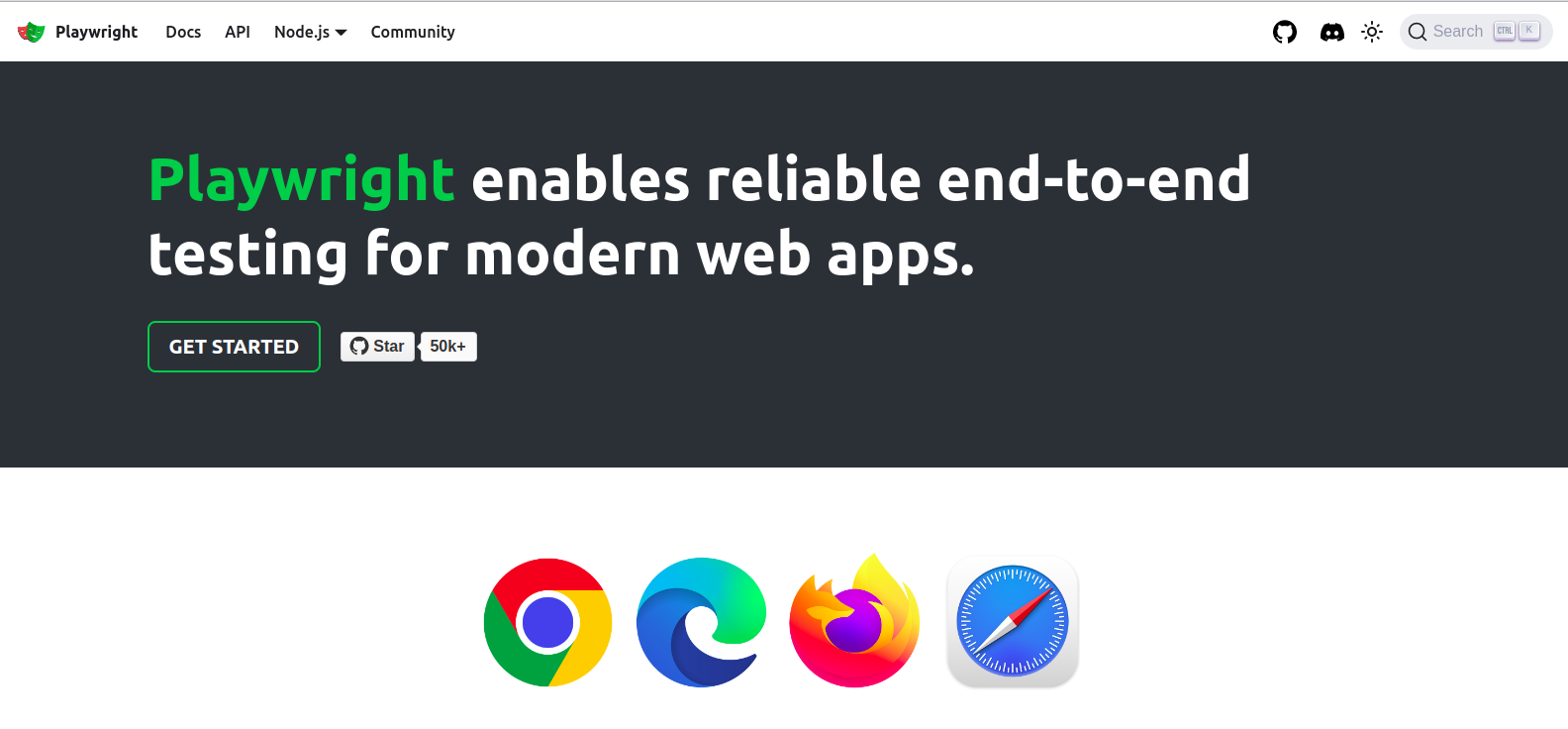
Playwright is an open-source UI automation testing tool supporting multiple programming languages, browsers, web, mobile, and desktop platforms. It offers robust features such as cross-browser testing and is suitable for web and mobile applications.
It takes a developer-centric approach to test automation, but with a focus on cross-browser testing and automation of complex scenarios. Playwright also provides automatic waiting and debugging features, which can speed up test development and maintenance.
Reliable auto-waiting and network interception
Cross-browser support and multiple programming languages
Open-source and suitable for web and mobile applications
Headless browser testing
Device emulation and geolocation testing

Puppeteer is a Node.js library that offers a high-level API for UI automation testing. Its advanced features include headless Chrome testing and are easily integrated with other testing frameworks.
Puppeteer can be used for web automation and scraping tasks. However, while Puppeteer can be used for cross-browser testing, it is mainly designed for use with Chrome and Chromium browsers.
Headless browser testing and extensive API
High-level API for UI automation testing
Node.js library with powerful features
Integration with other testing frameworks
Support for generating screenshots and PDFs
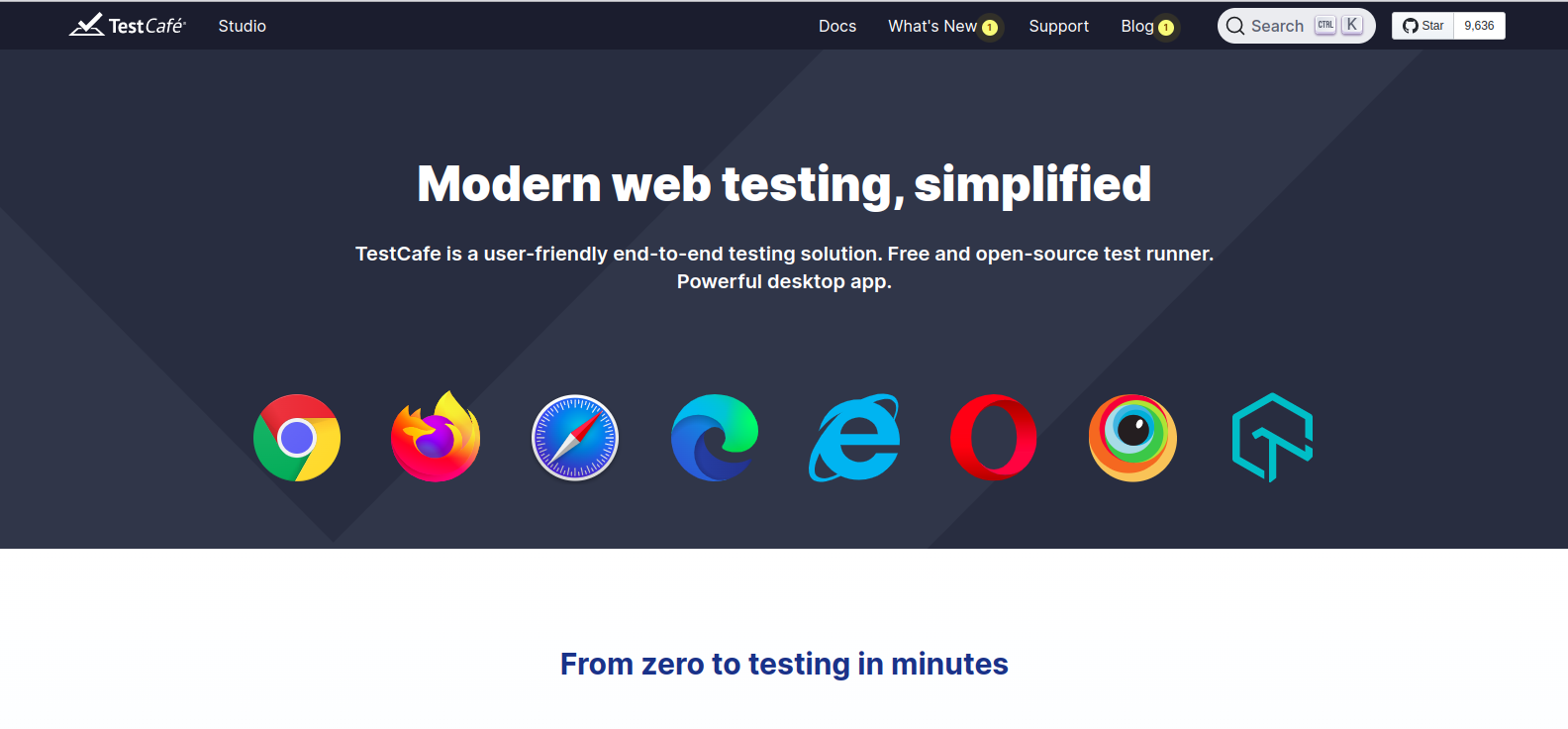
TestCafe is another popular open-source cross-platform UI automation testing tool compatible with multiple browsers and operating systems. It uses JavaScript to automate end-to-end web testing. It has a unique approach to test automation by running tests directly in the browser, without requiring browser plugins or additional software.
TestCafe supports cross-browser testing and can run on Windows, macOS, and Linux operating systems. However, it is mainly focused on web testing.
No browser plugins or WebDriver installations required
Cross-platform compatibility with multiple browsers and operating systems
Simple, intuitive interface
Parallel test execution and concurrency support
Built-in automatic waiting mechanism
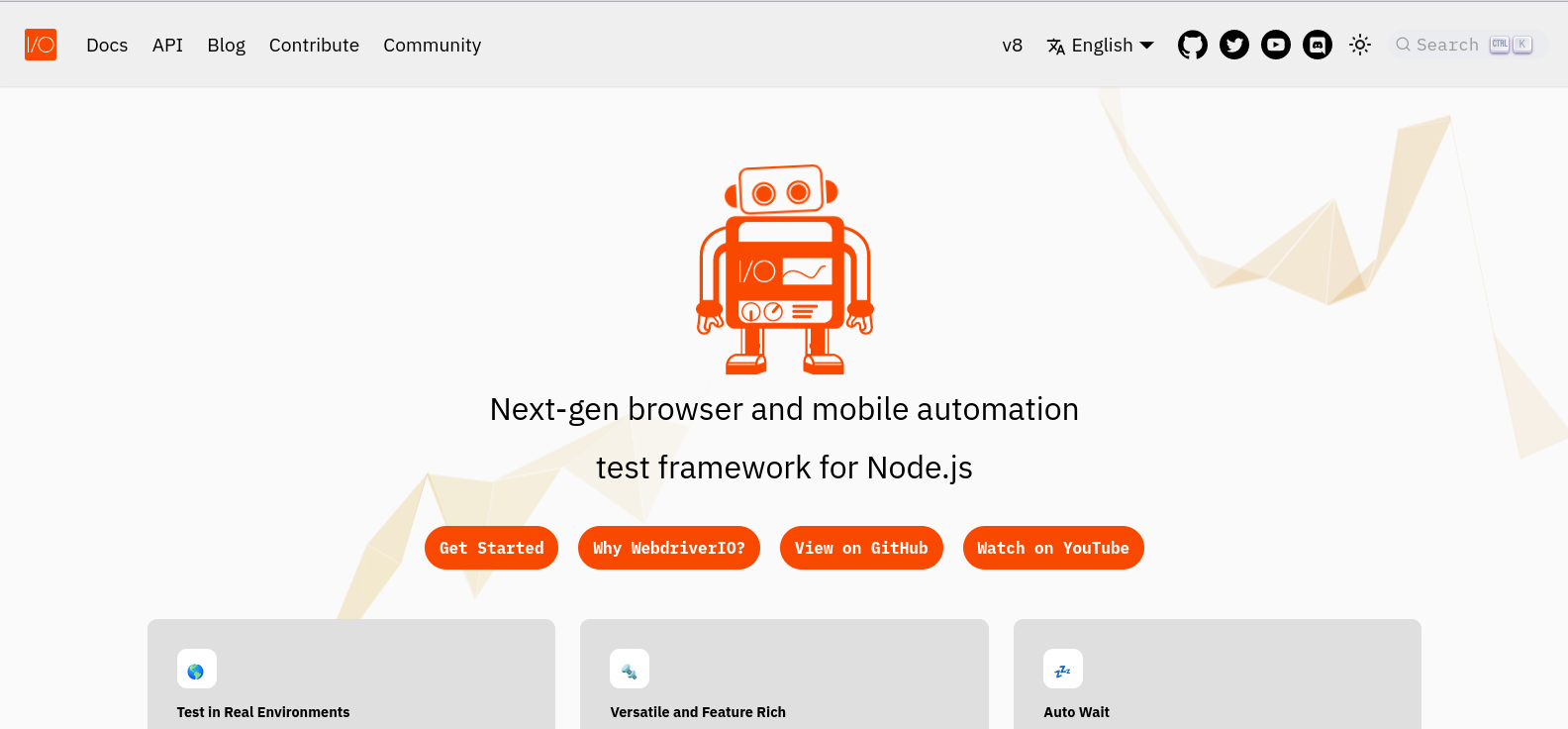
WebdriverIO is a versatile UI automation testing tool that supports multiple programming languages and browsers. It has a user-friendly interface and seamless integration with other testing tools and frameworks.
It uses Node.js to automate web applications. It follows the WebDriver protocol and supports cross-browser testing and parallel execution. WebDriverIO provides a simple and concise API to write tests, and it integrates with various test runners and other tools. It is mainly focused on web testing.
Extensible plugin architecture and protocol support
Support for multiple programming languages and browsers
User-friendly interface
Seamless integration with other testing tools and frameworks
Synchronization support for asynchronous JavaScript
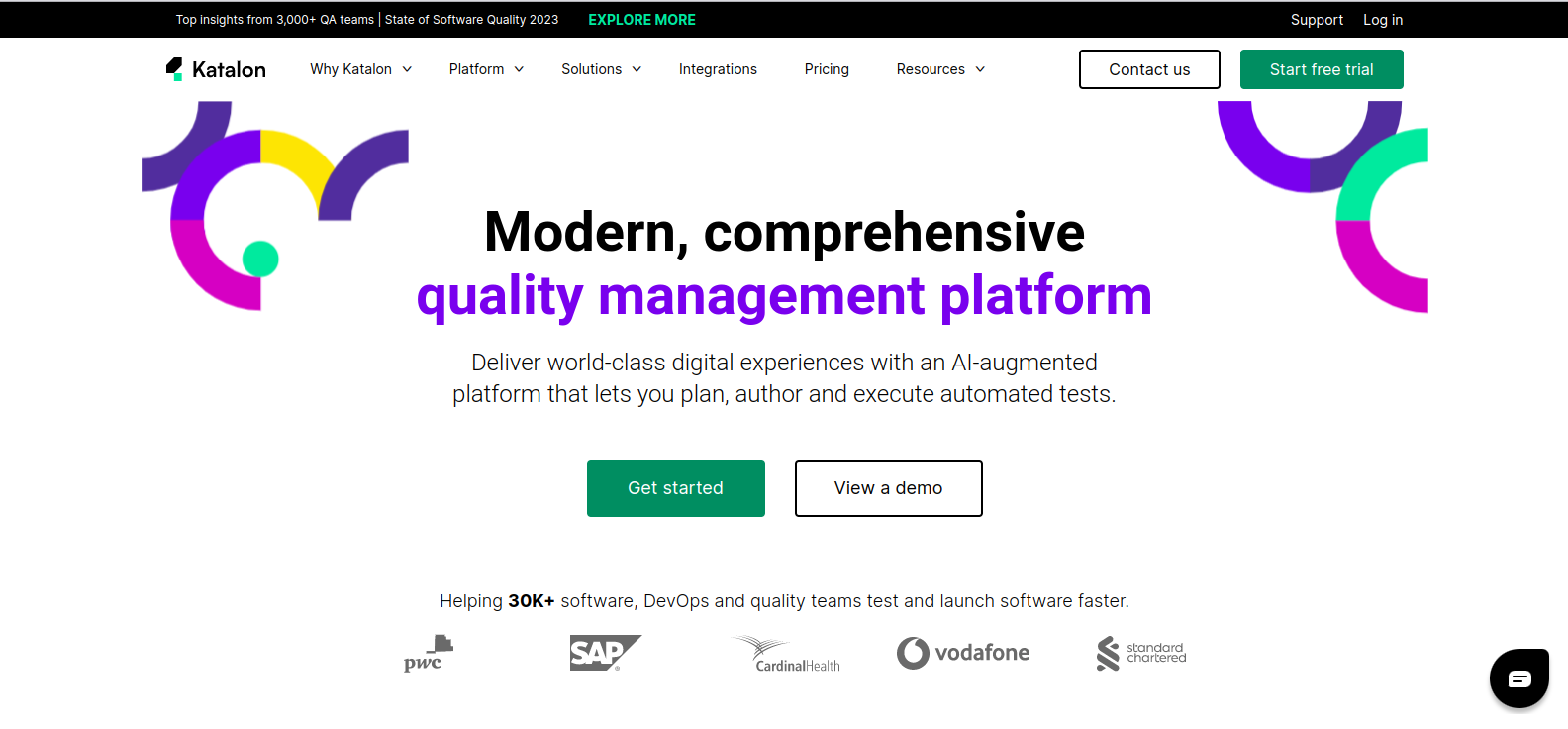
Katalon Studio follows a keyword-driven approach. It provides a graphical user interface (GUI) that allows users to create test cases using keywords and actions, without requiring programming skills. This approach aims to make test automation more accessible to non-technical users and to speed up the creation of automated tests.
Katalon Studio supports various platforms for test automation, including web, mobile, desktop, and API testing. It provides built-in libraries and plugins for popular programming languages and frameworks, such as Java, C#, and Selenium, and integrates with other tools and services, such as JIRA, Jenkins, and Git. This platform support aims to make it easier for users to integrate Katalon Studio into their existing workflows and to automate different types of applications.
Reusable test components and CI/CD pipeline integration
All-in-one solution for web, mobile, and API testing
Straightforward interface for manual and automated testing
Built-in test case management and reporting
Extensive integration with other tools and platforms
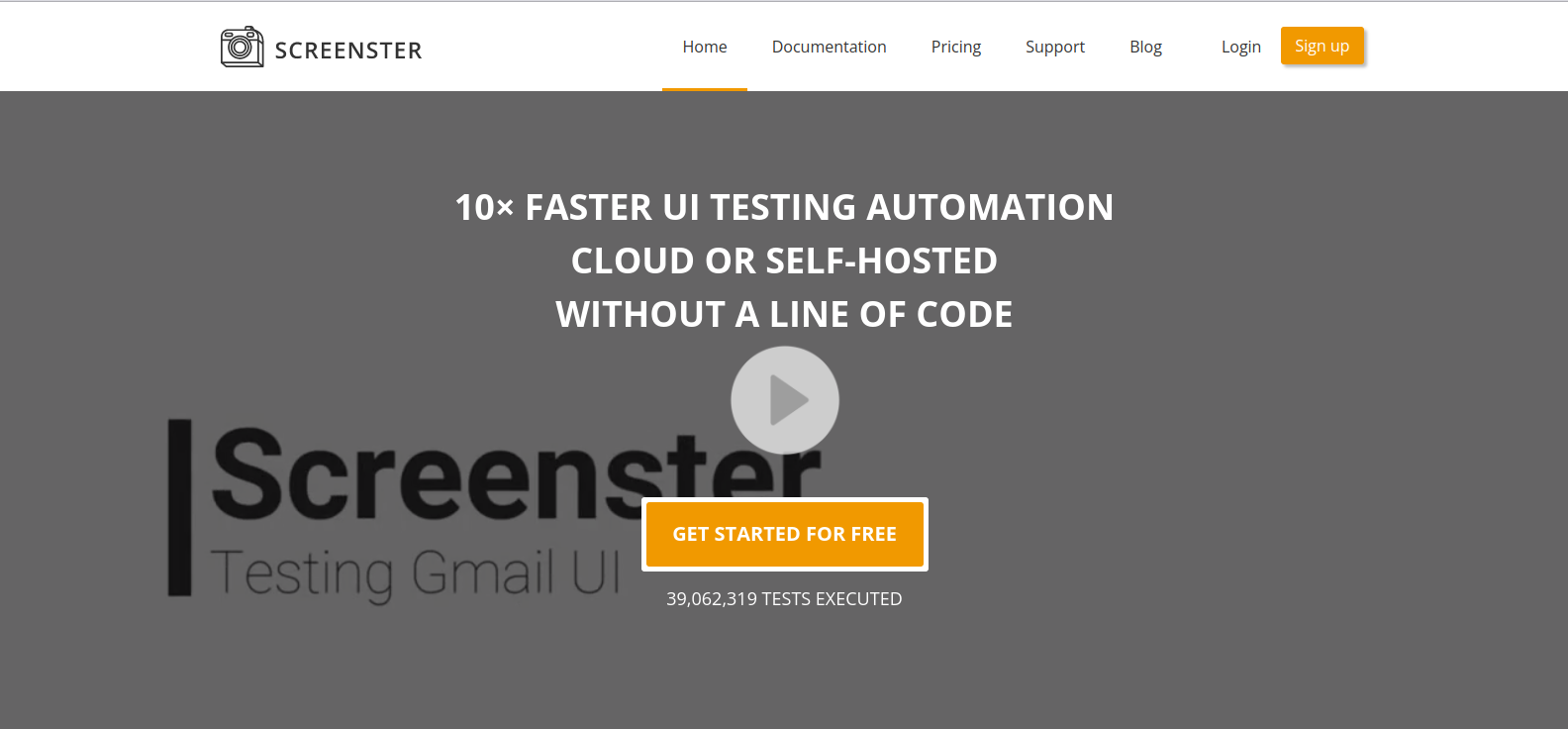
Screenster is a cloud-based AI-driven end-to-end testing platform that enables no-code automated testing. Its approach to test automation involves capturing user actions and replaying them using machine learning algorithms to create robust and reliable tests. Screenster's focus is on speed and ease of use, allowing users to create automated tests in minutes with its simple user interface.
In terms of platforms, Screenster supports web applications on various browsers such as Chrome, Firefox, and Safari. It also supports testing for mobile web applications on Android and iOS. Additionally, it can automate tests for desktop applications on Windows, macOS, and Linux, making it a versatile option for organizations looking to test across multiple platforms.
Intelligent visual comparison and layout issue detection
Cloud-based platform for web and mobile applications
Simple, intuitive interface
Integration with other testing tools and frameworks
Collaborative features for team-based testing
Considering the many available options, selecting the best-fit automated UI testing tool can be challenging. However, choosing the right, automated UI testing tool based on specific requirements can make the selection process more manageable.
Here are some key factors to consider when selecting a UI automation testing tool:
The tool should align with the project requirements, including the programming language, application type, and platform compatibility.
The tool should be user-friendly and easy to navigate, even for beginners.
The tool should have the necessary features and functionalities, including reporting, debugging, and support for frameworks.
The tool should integrate seamlessly with other software development tools, including CI/CD pipelines and version control systems.
The tool should have an active community of users, providing support and sharing knowledge.
The tool should be affordable and offer flexible licensing options, including open-source or commercial licensing.
Considering these factors, you can select a UI automation testing tool that aligns your test results with your project requirements and supports your software development goals.
Automated UI testing tools are essential for testing the user experience and functionality of software applications with graphical user interfaces (GUIs).
Selecting an appropriate testing tool can be complex with the various UI automation tools available.
This article reviews 10 leading UI automation tools for 2023. Each tool has unique strengths and capabilities for automating different types of UI tests